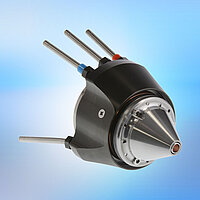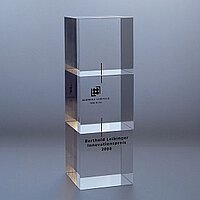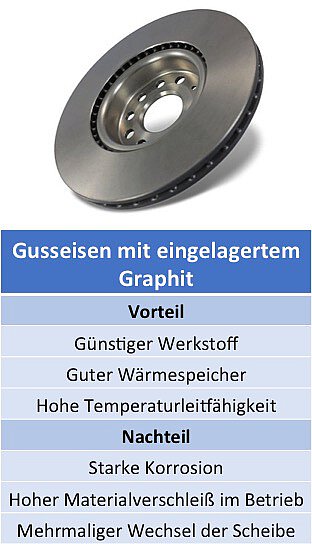Applications
Environmental pollution from brake discs
According to the Federal Environment Agency, the largest proportion of fine dust in traffic (approx. 60%) comes from abrasion of brakes, tires and the road. Technical solutions to reduce environmental pollution are still being tested or are not available. Expensive ceramic techniques are used for more wear-resistant tires and brake pads due to the lack of cheap alternatives. But the situation with the brake discs looks much more problematic, because there is no alternative to its manufacturing. There is no economical and above all environmentally friendly replacement. In particular due to the high loads in operation, they are one of the most stressed components on the car. Cast iron with embedded graphite is predominantly used here, but the price-performance ratio has so far justified the use of this material - despite the undisputed disadvantages.
However, this inexpensive material leads to high fine dust emissions during operation and therefore represents an immense environmental burden. The widespread coating processes such as electroplating or thermal spraying proved unsuitable as they cannot effectively protect the brake discs.
- No metallurgical bonding on cast iron
- Brittle phases, pores and cracks in the coating or connection zone
- A considerable amount of material (approx. 50% powder efficiency) and costs involved
EHLA as a solution for reducing fine particulate emissions
The special process control in the EHLA enables the production of low-wear brake discs:
- Metallurgical bonding on cast iron
- No flaking off of the layers as with conventional methods
- Free of pores and cracks in the layer
- Very low thermal impact and thus reduced distortion of the component
- Efficient and long-term protection of brake discs
This type of process control enables quick and economical coating of wear and corrosion protection layers for the first time. This leads to a drastic reduction in the environmental impact of fine dust:
- Less brake dust ⇒ up to 90% reduction in emissions from fine dust
- Fewer disc changes by increasing the service life ⇒ service life over the entire car life cycle
- Use of environmentally friendly materials
- Low consumption of resources (approx. 90% powder efficiency)
- Saving valuable resources through thin layers
- Less post-treatment
- Innovative material combinations possible





